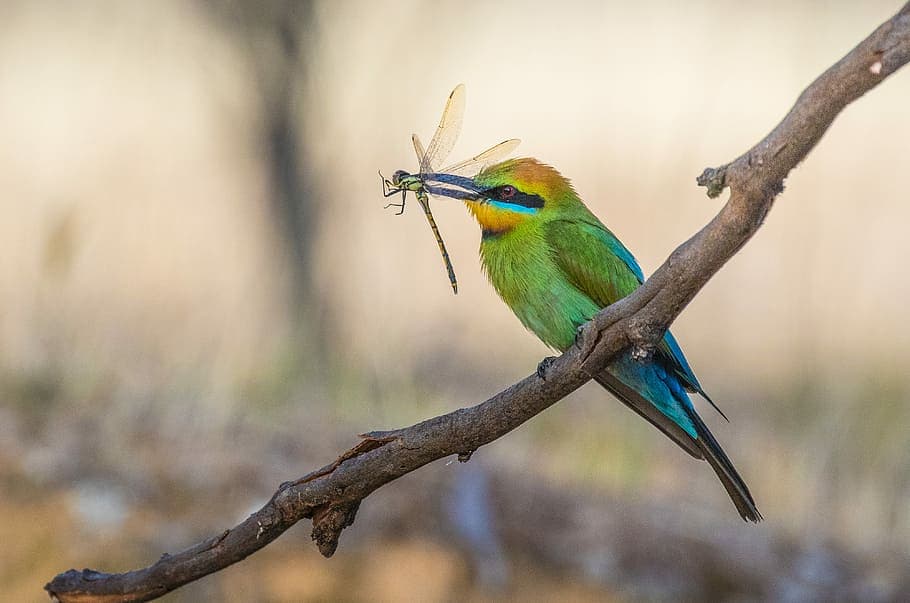The name says it all, bee-eaters feed on bees but they also eat other flying insects. There are 30 bee-eater species in the family, mostly in Africa and Asia while a few species are in Australia, New Guinea, and southern Europe. I find them very interesting because of their adorable appearance, colorful plumage, and ways of living. We have 5 bee-eater species in Cambodia, and I am going to talk about each of them below.
Asian Green Bee-Eater (ត្រដេវតូច)
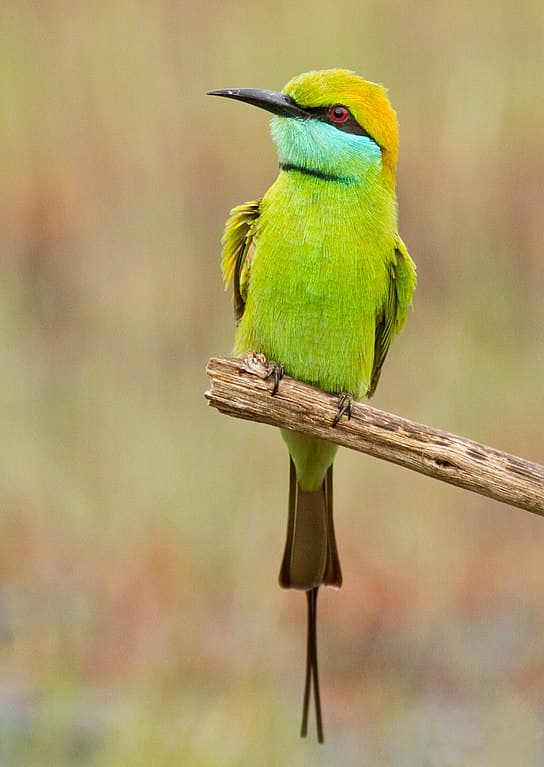
The Asian green bee-eater or green bee-eater is a cute bird with bright green plumage and a blue chin and throat. It has a crimson iris along with a fine black line that runs in front of and behind its eye. As the Southeast Asian species, they have rufous crown and face with green underparts. The best part? All green bee-eaters have a distinctive gorget of black stripe around their throats which is absolutely beautiful. These birds breed in open countries with bushes and trees where they perch in small groups but roost in large numbers. With up to 200 to 300 individuals, they call loudly and move excitedly before settling back.
This gorgeous bee-eater primarily feeds on insects such as ants, bees, beetles, butterflies, grasshoppers, and wasps that they can easily catch. The cool part is that they break the exoskeleton and remove the stingers from their prey before eating. How do they do that? Quite harsh, they do so by repeatedly thrashing the prey on the perch. Not different from other bee-eater species, this one is also amazing parents and monogamous birds. The male and female excavate a cavity to make sure that the nest is not visible before laying the eggs. Both parents take turns sitting on the eggs to incubate them, splitting the role about equally.
This colorful plumage comes with a disadvantage because they are very easy for predators to see. Some of the main predators that prey on green bee-eaters and their eggs are butterfly lizards, dogs, raptors, and snakes. These insectivorous birds are very beneficial for farmers, and this is why many farmers set up perches for them. They are not only gorgeous to see but also helpful in controlling insect populations throughout their range.
Blue-Bearded Bee-Eater (ត្រដេវព្រៃ)
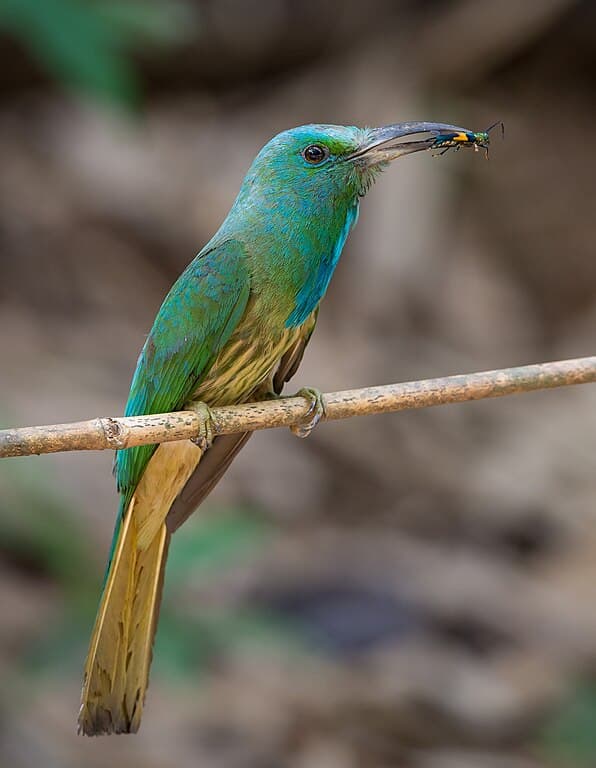
With a size of up to 35 centimeters, the blue-bearded bee-eater could be the largest bee-eater species among the 30 species. The color of the plumage is grass green, and they have a turquoise chin, face, and forehead. Both males and females look similar but the males have more reflective ultraviolet blue throat feathers than females. Meaning “forest bee-eater” in Khmer, this bird inhabits thin to fairly thick forests with clearings.
As large birds, they also have a large sickle-shaped bill that allows them to catch larger insects. They feed mainly on bees, and their main target is the giant honey bees. The breeding season is from February to August, and this bee-eater species does nest excavation a month before laying eggs. Their nest is more of a deep tunnel that they excavate in a mud bank for 4 eggs. Since they don’t migrate, they remain in their habitats all year long.
Blue-Tailed Bee-Eater (ត្រដេវក្បាលបៃតង)
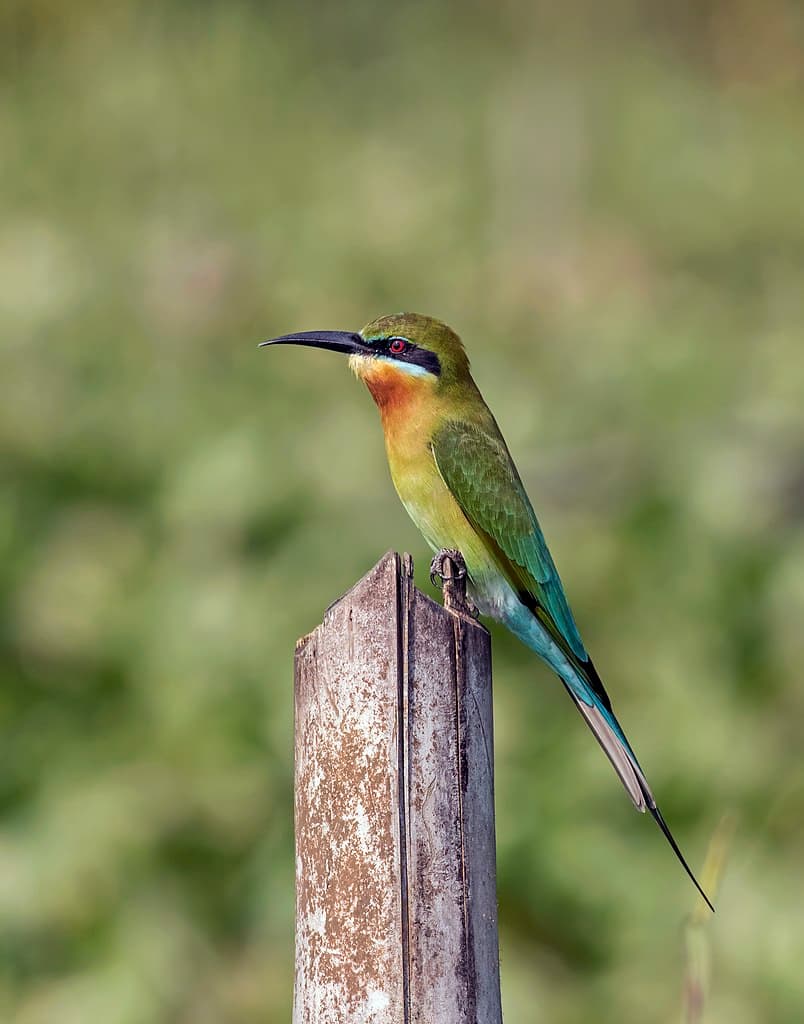
As a medium-sized bee-eater, this bird can grow up to 23 to 26 centimeters, including its tail feathers. The stunning coloration of the blue-tailed bee-eater is one of a kind, rich color with a predominant green body. If you take a look at that face, you can see the perfect combination of a narrow blue patch and a black eye stripe. The brown and yellow throat is an amazing highlight along with two attractive elongated central tail feathers.
The menu of their diet consists of various insects such as carpenter bees, dragonflies, hornets, and wasps. This bird likes living near large waterbodies, and they also forage in flights over backwaters, estuaries, or over the sea. While the previous two bee-eater species do not migrate, this one is the opposite as they are strongly migratory. Seasonally, they migrate to various parts but they only breed in small areas across their range. Mostly, they breed in river valleys where they can tunnel their nests into loamy sand banks. The nest tunnels can run almost 2 meters deep to accommodate 5 to 7 eggs.
Blue-Throated Bee-Eater (ត្រដេវក្បាលត្នោតចាស់)
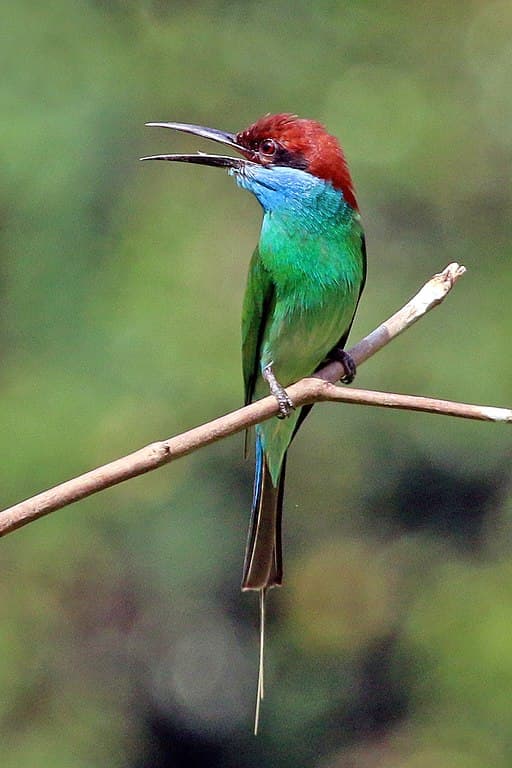
Clearly one of the most beautiful bee-eater species, the colorful plumage of the blue-throated bee-eater says it all. The ombre plumage with dark green wings, light green breast, white belly, and blue throat looks absolutely stunning. This bird has a red crown and nape, and black eye patches along with a blue tail. The blue-throated bee-eaters are found in subtropical or tropical mangrove forests throughout Southeast Asia. At the same time, they also inhabit flat plains like dunes, farmlands, riversides, sandy clearings, and suburban gardens.
What I find strange about this bee-eater species is their breeding habit and the survival rate of the chicks after hatching. Blue-throated bee-eaters practice asynchronous brooding, meaning they begin brooding at different times. Simply put, their hicks hatch at different times. The size of the chicks correlates with the sequence and timing of the hatching. So the firstborn is always the largest, among the 2 to 7 eggs that the mother lays.
To me, the survival of the chicks is the strangest part because the chicks normally die in order. The youngest and the smallest usually die first, from the attacks of their own siblings. How cruel, right? Older chicks attack their smaller and younger siblings by utilizing a sharp hook on their upper bill. This results in development loss and wounds on the hatchling’s naked head. Sibling attacks are common when food is scarce, and the older chicks want food from their parents. Next time you see a blue-throated bee-eater, there is a high chance that it is the firstborn. We learn something new every day, don’t we?
Chestnut-Headed Bee-Eater (ត្រដេវក្បាលត្នោត)
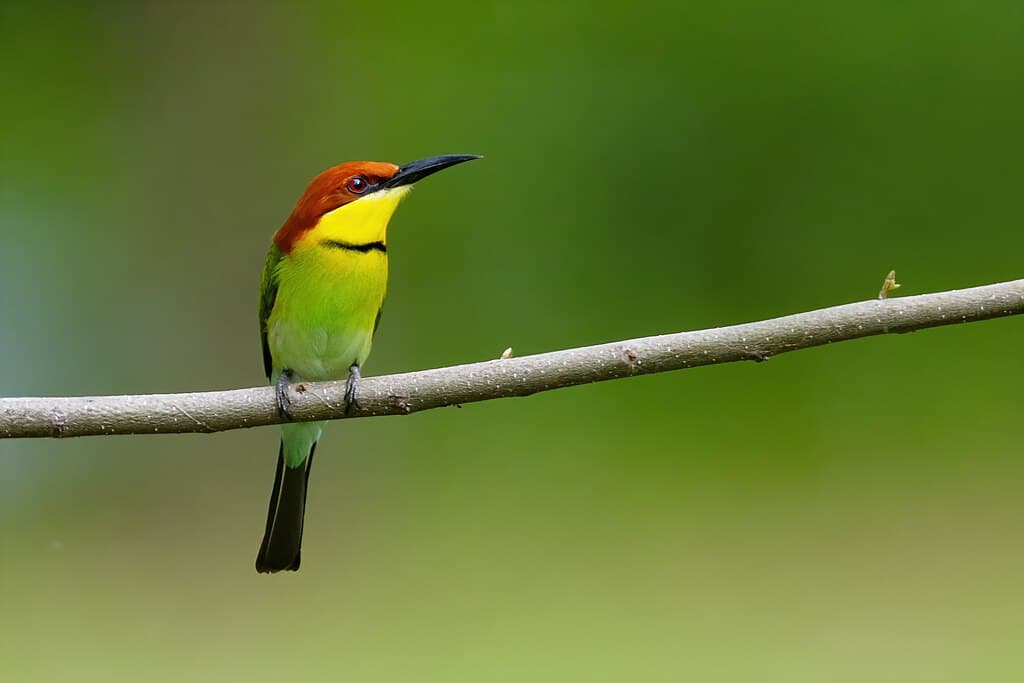
So richly colored, chestnut-headed bee-eaters have a predominantly green body with a blue belly and lower rump. And would you look at that face! The face and throat of the bird are yellow with a black eye and neck stripe. Just like the name suggests, it has a chestnut crown as well as chestnut ear-coverts, lower face, and nape. Not different from other bee-eaters, this species also feeds on insects such as ants, crickets, dragonflies, honeybees, moths, and wasps.
When it comes to habitats, they inhabit ecosystems like agricultural fields, dry forests, moist lowland forests, rivers, and rural gardens. Chestnut-headed bee-eaters are mostly common in highland areas and subtropical open woodlands but these gregarious birds colonially nest in sandy banks. The couple creates a long tunnel to fit 5 to 6 eggs, and there are between 10 to 100 nests in a colony. Both parents take turns incubating the eggs, and the chicks leave the nest in 30 days.
Related Post: Thrust Bird Species In Cambodia
